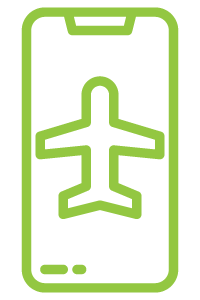North Star Systems is a hardware and software developer in Saskatchewan, Canada that manufactures Tattle Systems, a tool that supports business operations. Tattle Systems capabilities take technology to the next level. Real-time remote location, level, and data reporting define Tattle Systems. In our North Stars Systems Technology Tuesday series we will be exploring the business, culture, and impact of the technology industry. In our latest article, we discuss how the challenges of rural wireless connectivity demand innovation from IoT developers.
IoT & The Challenges of Rural Wireless Connectivity
 Billions of devices are connected to the Internet worldwide, a number that continues to increase as creative companies come up with innovative solutions using the Internet of Things (IoT).
Billions of devices are connected to the Internet worldwide, a number that continues to increase as creative companies come up with innovative solutions using the Internet of Things (IoT).
IoT is the interconnection of sensors embedded in the tools we use every day via the Internet to computers that can crunch the data. A simple example is a smart home with all its systems connected to automate everything from regular chores (make the morning coffee) to security (monitor for intrusions or allow you to remotely check if you really did shut off the stove).
The Industrial Internet of Things (IoT) puts these interconnections to work.
Tattle Systems is an example, allowing vendors to monitor fuel and fertilizer inventory and assets such as trucks and tanks remotely, in real time. Dispatchers use Tattle-equipped anhydrous ammonia systems with sensors in their bullets (stationary tanks) as well as the mobile units attached to the back of their customer’s seeding equipment. These sensors report wirelessly to the vendor’s computer or mobile device wherever they are, allowing the vendor to make sure they have adequate inventory and to top up customers to keep their seeding operations running without delay. Anhydrous is simply one of many applications of the Tattle IoT system.
What makes an IoT system successful? There are several features, some of which are more challenging than others.
Security, of course, is paramount. The system must employ robust encryption and authorization protocols to ensure only authorized users can access it.
From a technical standpoint, the system must be able to automatically and flawlessly detect its devices. That is, if you add sensors or a sensor goes offline for some reason, you need to know about it.
 Elements of the system must use energy efficiently. This is particularly important with battery-powered devices. Think of when you want to conserve your cell phone battery: you put it into airplane mode so it’s not always searching for network connectivity and doing automatic functions in the background. Likewise, IoT components must be designed so they don’t squander their available power — but they must always stay connected to fulfil their function.
Elements of the system must use energy efficiently. This is particularly important with battery-powered devices. Think of when you want to conserve your cell phone battery: you put it into airplane mode so it’s not always searching for network connectivity and doing automatic functions in the background. Likewise, IoT components must be designed so they don’t squander their available power — but they must always stay connected to fulfil their function.
IoT devices must also use bandwidth efficiently. The Internet is often referred to as the Information Highway, but it’s more like a whole system of roads. There are multi-lane expressways in the cities and single-lane dirt roads in the most remote parts of the country. Both can carry vehicles, but the highway can carry more, faster, and in both directions simultaneously.
Bandwidth is directly related to the challenge of latency. This is the period of time from when you send a signal for something to do something, then get a response that it has been done. When things are close by on a small network, with high-speed connectivity, this delay is so short you don’t notice it. But IoT operates on public networks. Not only do IoT signals have to contend with distance and obstacles of geography, but also competition from people making phone calls, students doing their homework or families streaming television. This makes for interesting challenges and innovative solutions for IoT developers like North Star Systems.
Wireless service providers as well as provincial and federal governments are striving to bring high-speed connectivity to rural Canada, bringing much-needed capacity to the country. However, as always, increased capacity sparks new ideas for IoT, such as “smart farms” featuring self-driving equipment operating on the ground or in the air via drones. As systems become more robust, innovators come up with new ideas that weren’t previously possible.
As an IoT systems developer, North Star Systems works at the leading edge of network capacity, producing solutions for rural and agricultural customers that are reliable, secure, and above all, add value to their customers’ operations. In the end, it is this human angle – expertise, experience, and commitment – that is the most important link in the network.
Read More North Start Systems Technology Tuesday Articles Here
North Star Systems leads in the creation of innovative technology, including the Industrial Internet of Things in Agriculture. We pride ourselves on outstanding service and our Tattle Products provide solutions to streamline the operations of your business.
If you would like to know more about how North Star Tattle Systems can help you reach out to our team today!